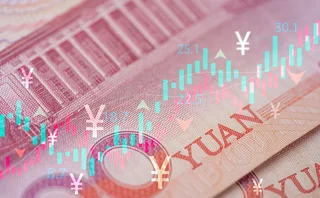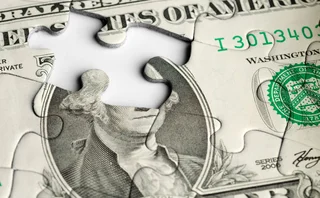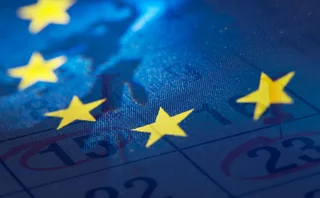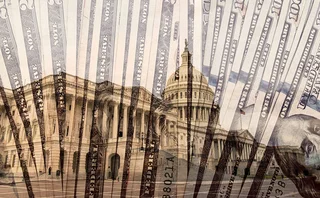
Foreign banks set to boost onshore Korean won trading
Plans for longer trading hours and more open interbank FX market will stoke KRW hedging demand

Dealers say South Korea’s plans to widen foreign exchange trading hours and allow offshore firms to participate in the local interbank FX market will attract Korean won hedging onshore and away from the predominant non-deliverable forwards (NDF) market.
International investors currently find it difficult to hedge FX risk for their Korean won assets onshore because the FX window closes at 3:30pm, the same time as Korea Exchange. Instead, many turn to offshore NDFs, which are settled in US dollars and don’t involve physical exchange of Korean won. Doing so can expose them to significant overnight and basis risks on their hedges.
However, the Ministry of Economy and Finance and the Bank of Korea confirmed on February 7 that the FX market’s operating hours will be extended to 17, closing at 2am the following day. The regulatory authorities also announced plans to open the interbank FX market to offshore financial firms certified as “registered foreign institutions”, or RFIs. With the ability to hedge in the interbank market, RFIs can then serve as liquidity providers for foreign investors who wish to trade onshore.
The changes, which are due to take effect in the second half of 2024, should drive significant growth in the onshore Korean won derivatives market, dealers say.
“The entire real money [segment] will, I think, slowly but steadily start to shift onshore,” says says Ruchir Sharma, co-head of GFX APAC at Deutsche Bank in Singapore. “For real money, there will definitely be a transition away from NDFs and towards onshore deliverables.”
For real money, there will definitely be a transition away from NDFs and towards onshore deliverables
Regional FX head at a global bank
Hongsik Kim, managing director for macro trading in Korea at Standard Chartered Bank in Seoul, agrees, adding that he expects the size of the market overall to increase because of the changes.
“The deliverable market will probably take some volume from the NDF market, but I believe the whole market – deliverable plus NDF – will grow,” he says. “It will make it much easier for foreign investors to invest in Korean securities because they will be able to put on deliverable trades until the end of London trading hours, with RFIs providing the liquidity to all those investors.”
The US dollar/Korean won NDF market is the largest in the world. Its daily average turnover totalled $49.8 billion in April 2022, accounting for 35% of all Korean won FX turnover, according to the Bank of International Settlements’ triennial survey of central banks, of which nearly half was traded in London. Singapore is also making a play to create a new liquidity pool for Korean won NDFs.
The proposed changes are intended to support the Korean financial regulators’ longstanding ambition of achieving an upgrade to developed market status by global index and benchmark provider MSCI.
A report in May 2022 by the Korea Capital Market Association estimated that Korea’s stock market could attract net foreign capital inflows of up to $36 billion if it secures that status. Last year, though, MSCI indicated that such an action will depend upon Korea making its markets more accessible to foreign investors, with its chairman specifically referring to “the ability to trade Korean won in the spot markets of the major financial centres of the world” as one factor.
The inclusion of Korean Treasury Bonds in the FTSE World Government Bond Index is a further stated goal of Korea’s regulators.
“This is an attempt to attract more capital by achieving KTB inclusion in the WGBI and putting Korean shares in the MSCI developed market index,” says Kim at Standard Chartered. “Foreigners sold Korean shares massively in 2020 through to 2022; during the same period, Korean investors are taking the money out of Korea to invest in foreign assets. I believe the Korean government and regulators are adopting a wise policy, internationalising the KRW currency to open the door and offer incentives to foreign investors.”
The regional FX head says global index inclusion will drive greater foreign investment in Korean assets, which will in turn create greater demand for FX hedges – particularly in the onshore market.
“I think a good example for that would be how the Malaysia market took off when Malaysia was included in the WGBI and the impact would be orders of magnitude higher for Korean [sovereign bond] inclusion,” says Sharma. “So, the real money segment would be likely to increase substantially off the back of that and the deliverable volume would go up meaningfully.”
Better control
Stephen Chiu, an FX analyst at Bloomberg Intelligence, says the proposals could provide a further benefit for the Bank of Korea. If the policy, as expected, leads to a shift in trading volumes into the onshore market, it would give the central bank greater control over the currency.
The same issue has been flagged as a concern by the central banks of other countries with currencies that see large volumes of trading in offshore NDF markets.
A 2021 report by the Reserve Bank of India, for instance, highlighted the growing size of the offshore rupee NDF market as a problem, since “any disruption in offshore market is beyond the domestic policy purview and can make domestic markets volatile.”
The RBI has taken a different approach to the plans being proposed by Korean regulators, however. The central bank introduced a rule change that allowed foreign banks and local banks to trade onshore US dollar-denominated NDFs in a special economic zone called the Gujarat International Finance Tec-City in Ahmedabad, known as Gift City.
“Korea right now is basically letting offshore participants decide the market price outside of the trading hours, which is a problem. It’s exactly the same problem that India had,” says Bloomberg Intelligence’s Chiu. “They want to have better control; they want to have better policy transmission. So that’s why they’re doing this.”
“We can see support for the currency and inflows in the chance of that happening,” adds Chiu. “But I’m sure the market, after reading for so long, will want to see more concrete, solid evidence. They will want the Minister of Finance telling us what they’re going to do and to see the steps towards that.”
Only users who have a paid subscription or are part of a corporate subscription are able to print or copy content.
To access these options, along with all other subscription benefits, please contact customer services - www.fx-markets.com/static/contact-us, or view our subscription options here: https://subscriptions.fx-markets.com/subscribe
You are currently unable to print this content. Please contact customer services - www.fx-markets.com/static/contact-us to find out more.
You are currently unable to copy this content. Please contact info@fx-markets.com to find out more.
Copyright Infopro Digital Limited. All rights reserved.
You may share this content using our article tools. Printing this content is for the sole use of the Authorised User (named subscriber), as outlined in our terms and conditions - https://www.infopro-insight.com/terms-conditions/insight-subscriptions/
If you would like to purchase additional rights please email info@fx-markets.com
Copyright Infopro Digital Limited. All rights reserved.
You may share this content using our article tools. Copying this content is for the sole use of the Authorised User (named subscriber), as outlined in our terms and conditions - https://www.infopro-insight.com/terms-conditions/insight-subscriptions/
If you would like to purchase additional rights please email info@fx-markets.com
More on Regulation
Europe’s FXPBs take advantage of margin rule carve-out
Some large FX options users have switched to dealers capitalising on regulatory mismatch
Emerging market liquidity faces capital charge crossroads
Hedge funds and market-makers need a more capital-efficient way to trade EM currencies, argues SGX exec
Softer FX rules for China QFIs set to boost CNY competition
Freedom to circumvent local custodians a plus for pricing and best execution – State Street
Industry urges focus on initial margin instead of intraday VM
CPMI-Iosco says scheduled variation margin is better than ad hoc calls by clearing houses
European funds face upsurge in settlement risk after T+1
Trade body Efama finds up to 40% of daily FX flows may have to settle outside protection of CLS
Basel Committee prepares crackdown on bank ‘window dressing’
Study says lenders have obscured their true systemic importance at reporting dates
Emir 3.0 threatens lag for Simm revisions
New EU rules could stall changes aimed at improving risk sensitivity of industry margin models
US dealers slam capital hit on clearing for unreal CVA risk
Fed would diverge from Basel standards by imposing CVA capital on client-cleared trades
Most read
- Are market-makers better at dealing with central bank intervention?
- Navigating the T+1 implications for FX traders
- Asia FX Awards 2024: The winners








